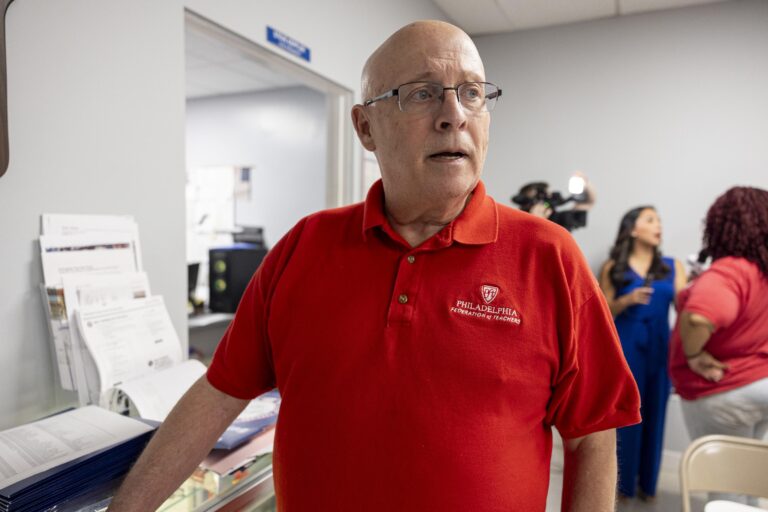Philadelphia Educators and School District Collaborate to Amplify Funding Efforts
In an uncommon show of solidarity, the Philadelphia Federation of Teachers (PFT) and the Philadelphia School District have jointly decided to temporarily suspend contract negotiations. This pause allows them to concentrate their efforts on advocating for increased financial support for the city’s public education system. Both entities recognize that sufficient funding is vital not only for equitable teacher salaries but also for tackling persistent challenges such as overcrowded classrooms, aging infrastructure, and limited access to essential educational tools. This strategic pivot highlights the urgency of securing enhanced budget allocations from state and local governments to address these pressing issues.
Their advocacy campaign centers on several critical objectives:
- Boosting state education budgets: Urging legislators to prioritize funding for public schools amid competing fiscal demands.
- Modernizing school facilities: Enhancing safety measures, upgrading technology, and creating conducive learning environments.
- Expanding student support services: Increasing availability of mental health counseling, extracurricular activities, and special education programs.
To galvanize community backing, the PFT and district officials plan to host joint town hall meetings and launch coordinated media campaigns. This united front aims to foster sustainable improvements benefiting educators, students, and families throughout Philadelphia.
Analyzing Proposed Budget Enhancements for Philadelphia Public Schools
Recent budget proposals reflect a concerted effort by both the PFT and the school district to prioritize immediate student and staff needs over ongoing contract discussions. The proposed funding increases target critical areas such as classroom resources, mental health initiatives, and long-overdue infrastructure repairs. Officials emphasize that these investments are essential to narrowing educational disparities and ensuring equitable access to quality learning environments for all students.
Highlights of the proposed budget increases include:
- Hiring additional specialized educators and mental health counselors
- Expanding social-emotional learning and wellness programs
- Upgrading outdated school facilities, including HVAC systems and classroom technology
- Enhancing professional development opportunities and incentives to retain teachers
| Category | Proposed Funding Increase | Anticipated Benefits |
|---|---|---|
| Mental Health Services | $5 million | Expanded access to counseling and wellness programs |
| Facility Improvements | $12 million | Safer, more modern classrooms and school buildings |
| Teacher Development & Retention | $3.5 million | Enhanced training and incentives to keep skilled educators |
How Funding Delays Adversely Affect Teachers and Student Resources
When financial support is postponed, both teachers and students experience immediate setbacks. Educators frequently report shortages of vital classroom materials, which hampers instructional quality and student participation. Many schools face deficits in textbooks, digital devices, and even basic supplies like notebooks and writing tools.
Additionally, funding interruptions worsen staffing shortages by restricting the district’s capacity to recruit and retain qualified personnel. This leads to increased class sizes and the reduction or elimination of specialized programs such as arts education and counseling services, which are crucial for holistic student development. The following summarizes the most urgent resource gaps caused by funding delays:
- Insufficient classroom materials: including textbooks, stationery, and technology devices
- Postponed maintenance: resulting in unsafe or uncomfortable school environments
- Cutbacks in extracurricular programs: limiting opportunities for student engagement beyond academics
- Increased teacher workload: due to unfilled vacancies and reduced support staff
| Resource | Effect of Funding Delays | Typical Delay Duration |
|---|---|---|
| Textbooks & Supplies | Students face weeks-long waits for materials | 3 to 6 weeks |
| Support Personnel | Reduced availability of counseling sessions | 4 to 8 weeks |
| Technology | Outdated and insufficient devices hinder learning | Recurring monthly delays |
Strategies to Balance Contract Negotiations with Funding Advocacy Initiatives
Successfully managing contract discussions alongside budget advocacy requires a deliberate and coordinated approach. Stakeholders must prioritize the district’s urgent financial needs while maintaining a constructive labor relationship. Establishing transparent communication between union leaders and district officials is essential to align messaging and amplify public support. Presenting a united front in community forums, social media, and public statements can build momentum for securing increased funding.
Recommended approaches include:
- Coordinating timelines for contract talks and advocacy campaigns to prevent conflicting priorities
- Utilizing data on student outcomes and resource gaps to strengthen funding appeals
- Mobilizing parents, community leaders, and local organizations as advocates to broaden support
- Assigning distinct roles within union and district teams to separately manage negotiations and public outreach while maintaining cohesion
- Regularly assessing public opinion to refine strategies and messaging dynamically
| Strategy | Advantage |
|---|---|
| Joint public communications | Demonstrates unified community commitment |
| Evidence-based advocacy | Provides credible justification for funding requests |
| Role differentiation | Enhances efficiency and clarity in task execution |
Final Thoughts on Philadelphia’s Education Funding Push
With contract negotiations temporarily on hold, the Philadelphia Federation of Teachers and the school district have made it clear that securing additional funding is their foremost priority. This collaborative focus highlights the significant financial hurdles confronting Philadelphia’s public schools and sets the foundation for future discussions on how best to support educators and students. Community members and stakeholders will be closely monitoring these efforts as both parties strive to close funding gaps that are critical to the district’s long-term success.








